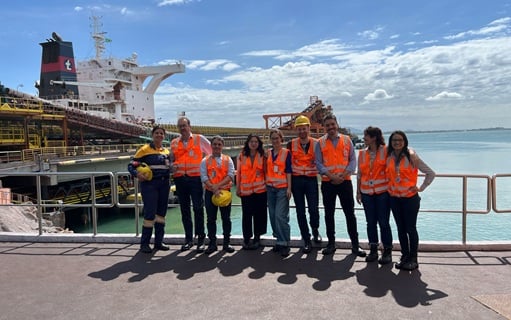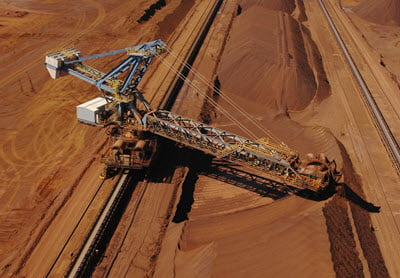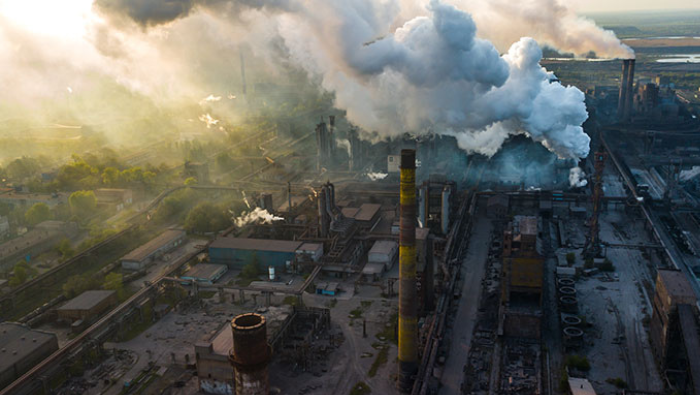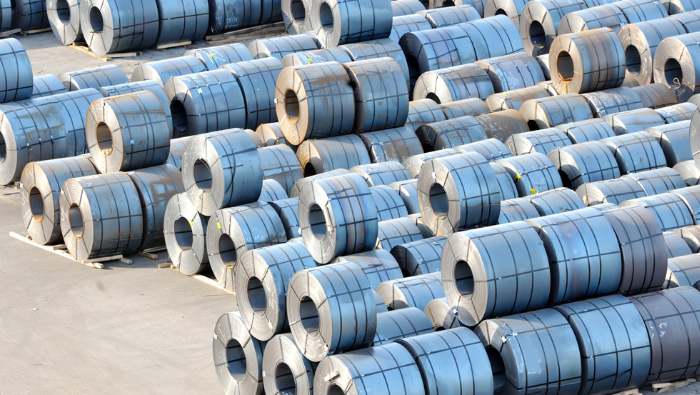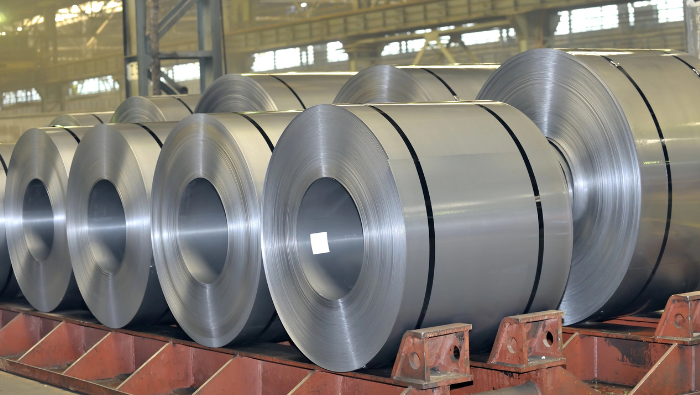Iron ore prices reached above $120 /t in July 2019 following supply disruptions fuelled by Vale’s tailings dam disaster in Brazil and cyclones in Western Australia.
Price volatility has been significant over the past decade and this volatility is expected to continue making investment decisions difficult. In this Insight, we explain the importance of understanding and quantifying the inherent uncertainty associated with iron ore price forecasting and valuations to support robust investment decision making and explain how CRU’s risk adjusted decision making tools including Real Options, can help.
What is the importance of today’s prices?
Following a sharp decline in iron ore prices in 2014 (iron ore prices declined from $120 /t in Q1 to $74 /t in Q4), the iron ore industry saw a large number of mostly small-scale miners exit the market. Indeed, our analysis shows that ~40 Mt/y of high-cost supply exited the market by 2015. This was mainly driven by the delayed supply response from low-cost majors (We exclude mines which reached their end of life and only focused on the mines/projects which closed due to uncompetitive status).
From an investment perspective, the two main features of iron ore projects are a long investment horizon and high capital intensity of the project. Generally, the investment decision is dependent on the trajectory of the price outlook as well as the certainty in this trajectory. The decision to invest in or terminate a project is often underpinned by consensus expectations for iron ore prices. Price expectations change over time and are influenced by current prices. The volatility of price expectation is one of the key indicators for the likelihood of future investment in a mine. Movement in the consensus forecast drives the investment decision of an asset. However, only relying on the consensus price forecast to make an investment decision has its limitations given that its based on the current average expectations of the future.
To better illustrate this using actual data, we assessed the current status of the projects which were listed in our project landscape back in 2014. We classified these projects based on their current 2019 status into three categories:
- Projects that are currently either committed or operational.
- Projects that are still within our project landscape (not committed or operational).
- Projects that have had limited development over the past five years and are no longer in our project landscape.
Then, we calculated the weighted average of CRU’s Economic Costs, which is analogous with the incentive price to bring projects online, based on CRU’s estimate in 2014 shown in left chart below (These estimates published in 2014 edition of CRU’s Long-Term Market Outlook):
- Committed and operational projects: USD80 /t
- Projects that are still within our project landscape: USD103 /t
- Projects that have had limited development over the past five years and are no longer in our project landscape: USD137 /t
Comparing the above cost estimates against current prices shows that a substantial portion of projects (i.e. 13 out of 47 projects) that were in our project landscape in 2014 could have been economical under current prices, representing ~200 Mt/y of additional capacity. At the time of writing this insight, iron ore prices are hovering around $108 /t (i.e. as of June 2019) and this is an incentive for investment in additional supply.
In the right chart below, we modelled the Economic Costs of projects within our current project landscape. Depending on the outlook of iron ore prices, some of these projects are likely to be economical and provide positive return for their investors over the long term. While iron ore prices around ~$100 /t was well beyond the expectations of the market before the Vale tailings accident, this low probability, high price scenario we now find ourselves in may persist as tighter tailings safety regulations impede existing production capacity and increase the capital costs of new projects. As such, it is critical for project owners to reassess the price outlook and impact of uncertainties around this view.
What tools do CRU use to help you?
Understanding the uncertainty around the price forecast helps decision makers to evaluate the risk around future investment in iron ore assets. This is possible by not only looking at the base case price forecast but also identifying the sources of uncertainty. Examples include an assessment of specific supply shocks, the emergence of high cost Chinese producers and underestimating the impact of Chinese economic stimulus packages on demand, themes which are also explored in CRU’s Iron Ore Long Term Market Outlook.
In other words, when a single, deterministic view of the future is not sufficient, other methods exist to analyse a range of outcomes by taking a more probabilistic approach. This allows decision makers to capture a wide range of possibilities with respect to the forecast using the following two approaches:
- Scenario and sensitivity analysis
- Risk adjusted valuation analysis (i.e Real Options)
Scenario and sensitivity analysis - Using a range of scenario and sensitivity analyses, we are able to ‘stress test’ decisions where significant assets and capital are at stake. Scenario analysis addresses the key issues that the iron ore market is facing and need to be analysed for iron ore price forecasting. This allows us to create a framework to make sense of apparently conflicting or ambiguous market trends and signals, define an appropriate project scenario scope and provide compelling narratives about the future world to support robust investment decision-making. As part of this approach, we combine data driven views of the past, our specialist knowledge of the market and creative insight of the future.
Risk adjusted valuation provides a more realistic assessment of value
As discussed above, base case price forecasts and traditional project valuations are reflecting the current average expectations of the future. Further, scenario and sensitivity analyses help to provide alternative possible outcomes of the future. However, both methodologies fail to capture the unknown factors and shocks in the future. This is of particular importance for valuation of mining assets as the traditional valuation practices fail to account for the value of the uncertain events in the future. To address this issue, we conduct statistical techniques such as Real Options for quantifying the effect of uncertainty on our forecasts and valuations.
Real option analysis is one alternative tool to value potential flexibility through the optionality of future decision taking. This type of analysis involves analysing decisions through which both uncertainty (risk) and flexibility (options) can be accommodated. Flexibility is not considered in traditional valuation models; these models are rigid and assume all decisions today even though they could be taken in the future when more information is known. CRU’s Real Options and risk-adjusted dynamic modelling process includes the following steps:
Uncertainty identification - During project development, new information can add or decrease value and potentially results in project abandonment, scope extension or phasing. As such, the uncertainty context changes during a project development. Probabilistic analysis allows us to include uncertainties such as operational and geological risk as part of the valuation. As part of our analysis, we identify uncertainties such as price risks, project risks (i.e. capital costs over run), operational risk (i.e. geotechnical events, performance of bottlenecks) environmental risks (i.e. air quality, tailings) and infrastructure risks (i.e. transportation).
Uncertainty Quantification - Once the key risks are identified, we quantify them and define how they behave to value the project with uncertainty and option value. To specify well defined distributions for each assessed risk, we utilise our in-house operational and market data and quantify individual risks with probability distribution.
Risk assessment – Risk assessment uses a probabilistic valuation model as opposed to traditional NPV models which use deterministic valuation models. Simulating risks gives us a histogram with NPV risk metrics.
Strategy selection - Assessing all options and risks outcomes, we will analyse actions to be taken against risk. This step includes the comparison of options & strategies evaluated. CRU uses many risk indicators for assessment of business options: Value at Risk, Production at Risk, mean value & production, confidence levels, etc. Further, we identify opportunities to limit downside risk and leverage upside potential. Overall, risk-adjusted valuation gives a more complete picture as average NPV values do not tell the entire story.
CRU Consulting is well positioned to conduct such an exercise and help clients to consider a wide range of uncertainty factors in their decision-making process. Examples such as a tailings dam disaster in iron ore and China’s 276 working day policy on coal highlights the importance of understanding the implication of uncertainty into valuations and decision making. Our in-house models and databases coupled with our in-depth knowledge of commodity markets allow us to assist with complex decisions for our clients.
CRU also provides detailed market analysis and forecasts for iron ore mining costs, projects, supply, demand and prices in the following services:
- Iron Ore Cost Service - Asset by asset cost benchmarking and evaluation tool
- Iron Ore Long Term Market Outlook - Outlook to 2035 for supply, demand, projects and prices
- Iron Ore Market Outlook - 5 year forecasts for supply, demand, trade and prices
- Steelmaking Raw Materials Monitor - weekly price assessments and market analysis for iron ore, metallurgical coal and metallurgical coke
If you would like to speak to CRU's team in your region about how our services can support you and your colleagues in your market activity, please let us know and we will be delighted to discuss further with you.





